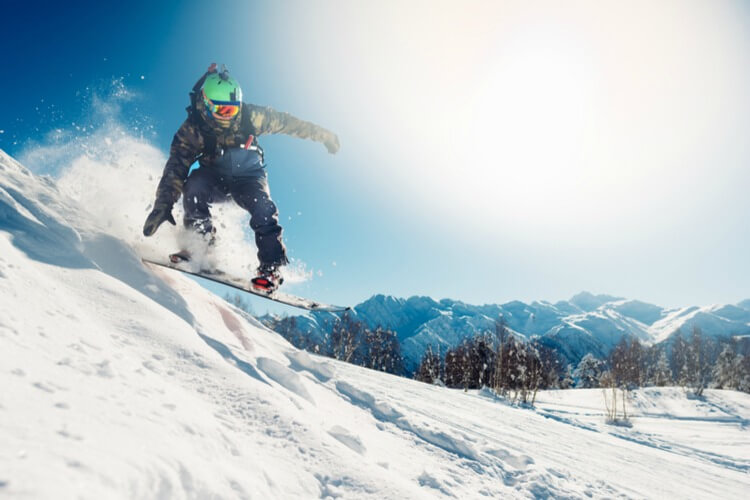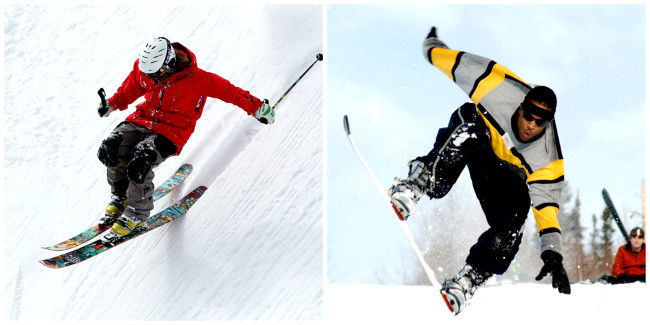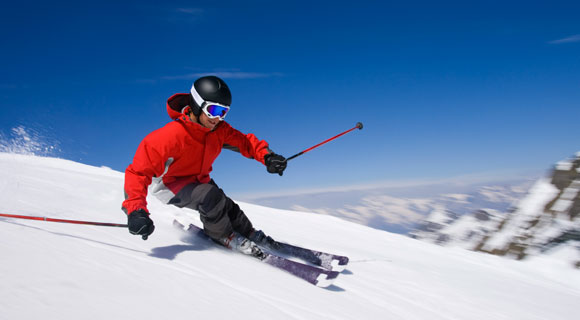
Hit the slopes in no time
Gliding through glorious white snow, with the wind in your hair and the sun on your face. It's easy to see why skiing is such a popular pastime. However, if you've never strapped on a pair of skis before, it can seem like a daunting prospect. So if you're thinking of taking up the sport, here are a few things you need to know before you hit the slopes.
Choosing the right equipment
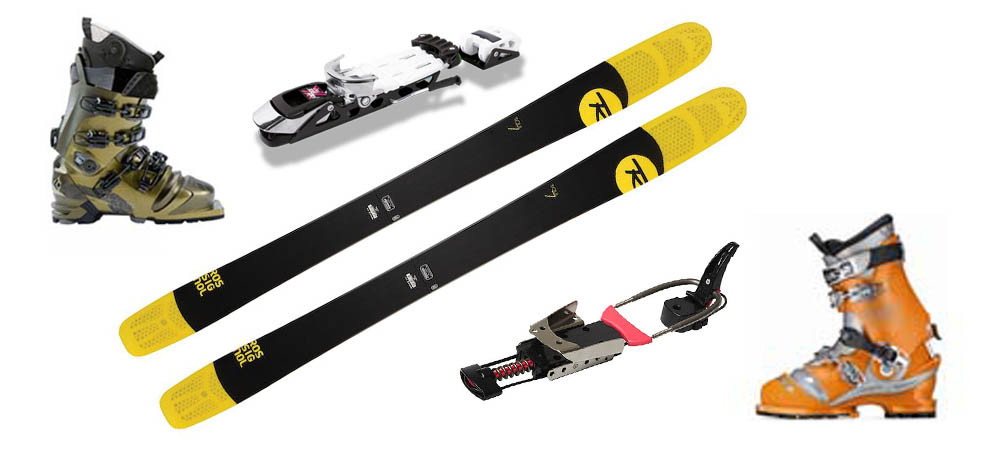
Get kitted out
First things first, in order to ski you'll need the right equipment. One of the biggest concerns of people who take up skiing is the cost. Skiing equipment and clothing can add up to thousands of pounds, especially if you're buying the best brands. So before you take the plunge, it might be worth borrowing or hiring your skiing equipment first. Whatever you decide, here's what you'll need:
- Skis - As a beginner, you should look for a ski that is about chin height. It should be soft in flex so it turns easily and is forgiving to the mistakes that beginners will make. You want a waist width that is within 70 to 76mm. This range will provide a stable platform that is easy to turn.
- Poles - As a rule, poles should be slightly shorter than armpit height. When buying poles, you should consider the which material, grip and basket (loops that extend around the bottom of the ski poles) are best for you.
- Boots - Ski boots are probably the most important part of your ski kit. Ski boots come in three main categories – leisure, sport and performance. These translate as beginner, intermediate and advanced. When buying your boots, make sure you get an expert fitter to help you.
What to wear when skiing
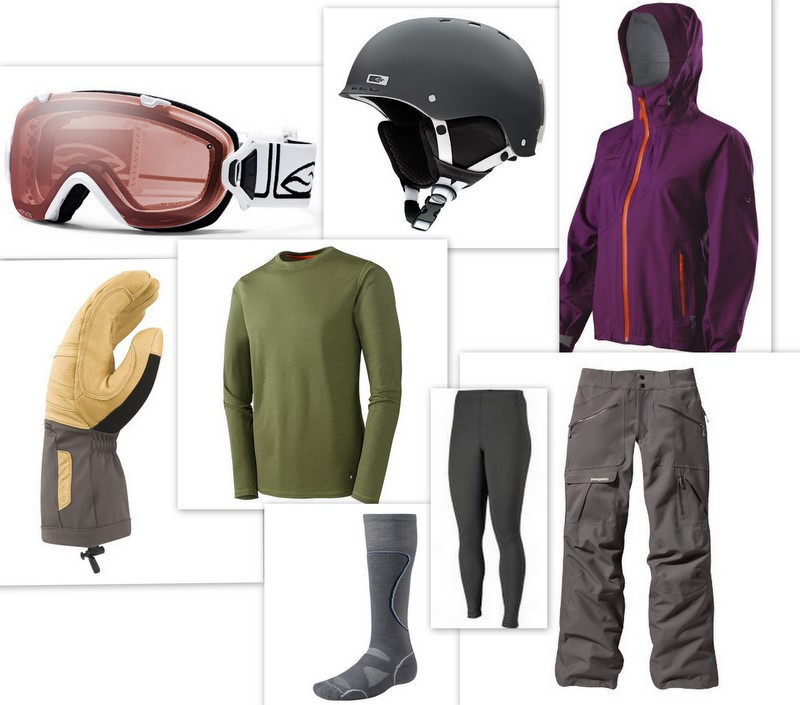
Ready for snow, from head to toe
Image Source
- Jacket and pants - When searching for a ski jacket and pants, look for a waterproof, breathable fabric such as GORE-TEX®. Also, make sure that the seams are sealed to stop moisture from getting in. In sub-zero temperatures, you'll also want a high collar, a hood and extra long cuffs.
- Base layers - Base layers are the first layer on your skin, designed to move moisture away from your skin to keep you dry, no matter how sweaty you get, or how wet the clothing on top of it. This keeps you warm because there’s no evaporation from damp cloth to cool your skin, and is essential in the mountains where periods of intense physical activity are followed by rest in freezing air.
- Mid-layers - A mid-layer, such as a thin fleece or a woollen jumper, should sit between your base layer and your jacket. The idea is to build up a layering system under your jacket, and then add or subtract layers according to the temperature.
- Goggles - Go for goggles over sunglasses. They're much better at protecting you from the wind and snow. Look for polarised lenses to reduce glare, and be sure that they have 100% UV protection. Try goggles on before you buy them to make sure they're a good fit.
- Gloves - As a beginner you're going to fall over. A lot. So a good pair of gloves are a must-have. Your first decision is whether to go for gloves or mittens - gloves are good for dexterity, whereas mittens are warmer. Whatever you decide, choose something that is waterproof, breathable and, above all, warm.
- Helmet - Even on nursery slopes, helmets are essential. Make sure that the helmet you pick meets Central European (CE) standard EN1077, an industry guide that assures you that your helmet is suitable for making it onto the slopes.
Again, if you're just starting out, you might want to consider borrowing gear from friends or hiring ski clothing rather than splurging on kit you may never use again. Then, once your become more proficient, invest in the clothing and equipment to suit you.
Learning to ski
Skiing isn't one of those sports that you just pick up, so it's a good idea to get some lessons from a qualified instructor beforehand. You'll often find classes at your local slope, and you may also want to find a ski school and get some professional instruction when you’re at a resort.
Once you’ve mastered a few basic skills and you feel comfortable on a pair of skis, you’ll get a lot more out of the experience when you do eventually head out to experience the mountains.
Try before you buy
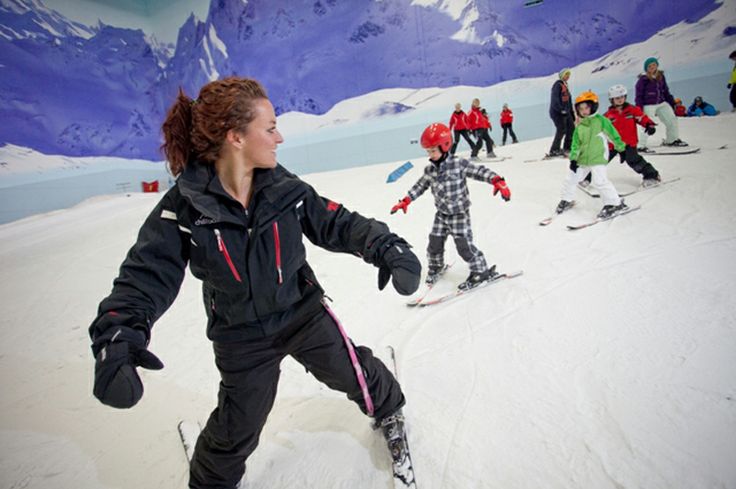
Try a dry slope first
Image source
Before committing to a full ski holiday, see how you fare on the dry slopes first with a visit to one of the UK's many ski domes. Now, skiing in a snow dome isn't quite like the real thing (a bit like surfing in a swimming pool), but it will give an idea of how you'd cope with sliding around on a pair of skis, and help you build your confidence.
Chill Factore in Manchester, which is home to the UK's longest indoor slope, offer 50-minute taster sessions with a fully qualified instructor from as little as £27. However, take a look at Ski UK's slope finder tool to find your nearest dry slope.
Best ski resorts for beginners
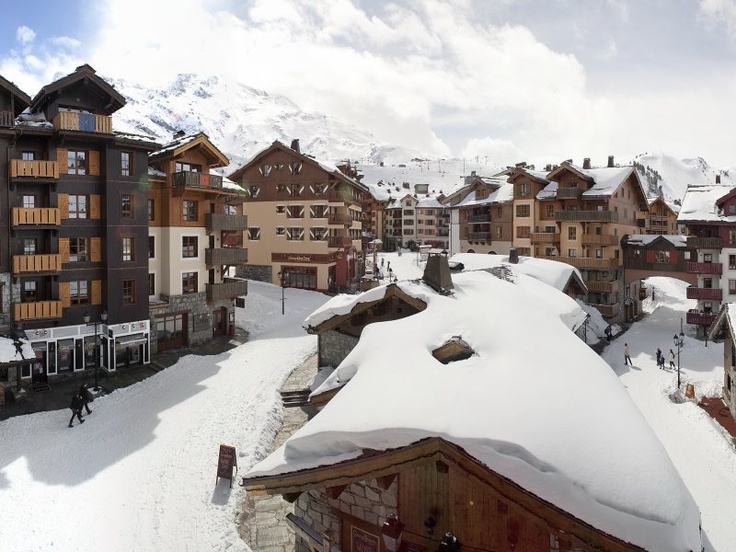
Les Arcs, France
Image source
If you're a ski virgin you don't want to fling yourself down the first slope you find. Instead, look for a ski resort that accommodates beginners. We recommend the following:
- Les Arcs, France - Les Arcs is perfect for beginners. Hit the resort's main village, Arc 1800, which has a series of nursery slopes. There's also a free beginner's lift, as well as a decent range of more advanced slopes for you to try as you progress.
- Passo Tonale, Italy - For one of the best places in Italy for first-timers, head to Passo Tonale is The nursery slope here is high, snow-sure but sunny and very gentle. And, when you need to give your legs a break, there's no better place to sit in the sun and watch the world go by.
- Pamporovo, Bulgaria - With 11 easy slopes to learn on, Pamporovo is a great resort for first-timers. There's a local ski school, which offers offers special English language group lessons. Plus, 'First time' ski packages are available, offering fantastic value for money.







